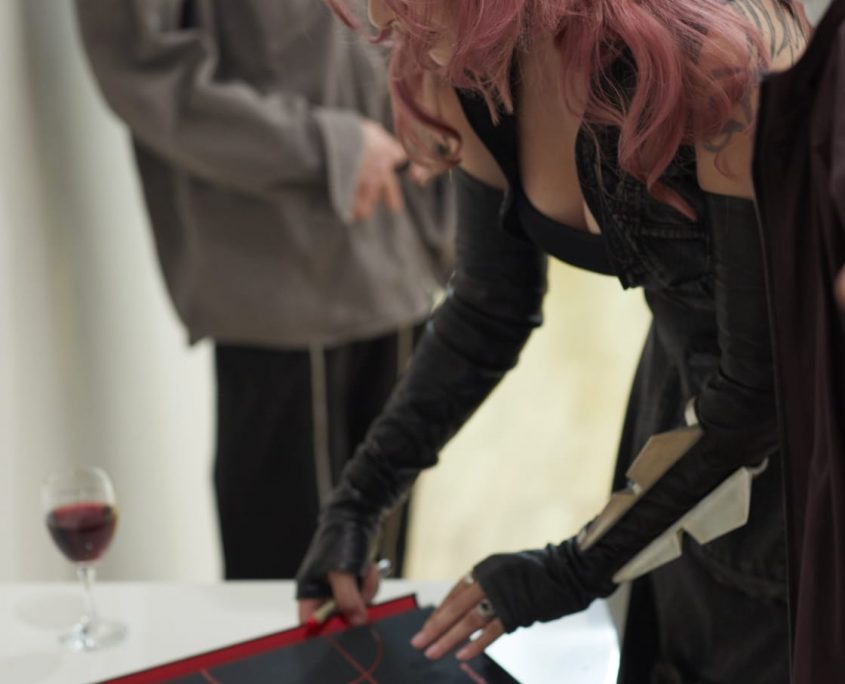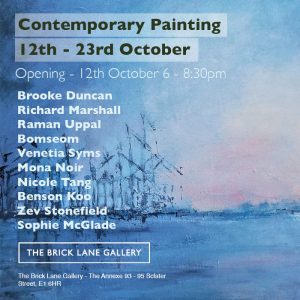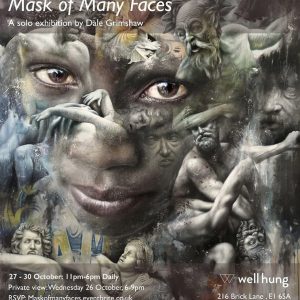Interview with Zoetica: The Mind Behind Chimeric Herbarium
In celebration of our current solo exhibition featuring Zoetica, we are publishing an interview with the artist about the inspirations behind her work and how her career has evolved while working on this project. Chimeric Herbarium celebrates a body of work that has meticulously designed and developed over the last decade and it is now on show in The Brick Lane Gallery until 10th October. A transcript of the interview is below:
What inspired this exhibition?
Chimeric Herbarium commemorates ten years from the start of the Alien Botany™ series, which includes everything from ink drawings to fashion collections, and has now been compiled into a limited-edition book. Chimeric Herbarium is a large-format coffee table art book launching in parallel with the exhibition. With an elucidating foreword by Ryan Oakley (Technicolor Ultra Mall), this book compiles all the form this series has embodied, and expands the Alien Botany universe with new field report and new art.
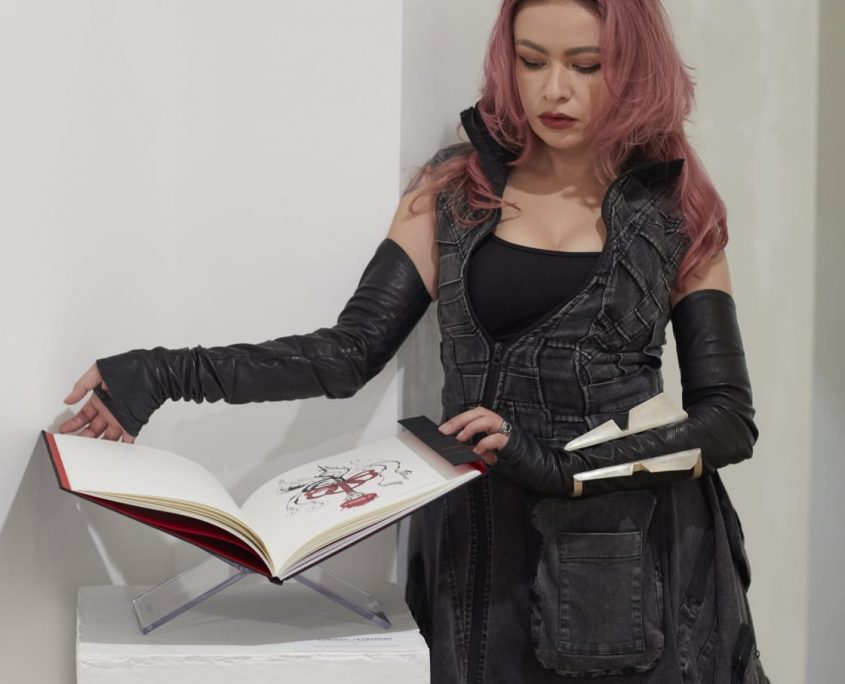
What was your experience during the creation of it?
This series first took root when I lived in Los Angeles – a strange city in a country I’m not from, which I’d spent years in and had taken great pains to adapt to. By 2011, when I painted the first two Alien Botany specimens, I was planning my escape. Over the next ten years, Alien Botany followed me to Northern California, then to Ireland, back to NorCal again, and now to London, where I finally docked. In all that upheaval, an alien world filled with hybrid flora and fauna flourished and occasionally made its way out of my head.
How did the work change over the ten years that you created it? If it did change, how did you maintain consistency?
For a long time, the series didn’t change much aside from the usual technical improvement from dedicating more time to the work. I first noticed a thematic shift in the beginning of 2020, when I sketched the idea for Fated after a trip to Prague. The previous time I’d been there was on a backpacking journey just after graduating high school; perhaps walking through that enchanted city in dramatically different circumstances and seeing it again with what felt like an entirely new set of eyes had completed some subconscious cycle. Then, this February, I felt something like a culmination when I drew Harbour in response to the attack on Ukraine. This drawing is so distinct from its predecessors that it let me know time had come to draw a line under the previous ten years. I’ve done that in my new coffee table book, Chimeric Herbarium, where I collected the many forms Alien Botany took over the years, wrote about the alien world of my reveries, and presented it all in context for the first time since the series’ inception.
Where did the idea for Alien Botany come from?
The project began to crystallise when I read Huysmans’ Au Rebours some years ago. The descriptions of plants in Chapter 8 echoed and bounced around my head for days. As a whole, though, Alien Botany is a consequence of a lifetime of experiences and passions, conceived at the intersection of Soviet space obsession, love of the compulsive detail in traditional scientific illustration, and fascination with the beauty and horror of the natural world. Take growing up in 80’s Moscow, for instance. It was impossible to turn on the TV without seeing UFOs and hearing abduction accounts – a curious byproduct of The Space Race. Coupled with my father’s massive collection of SciFi paperbacks -everything from the Strugatskys to Bradbury- this established an enduring affection for the speculatively-cosmic. Back before numerous international moves, I was a collector, amassing vintage medical tomes, tools, models and charts. There is something very human and very pure in the old scholars’ need to discover, dissect and disambiguate our reality through expeditions, research, and exhaustively-detailed illustrations — but also a great deal of speculation, in the early days.
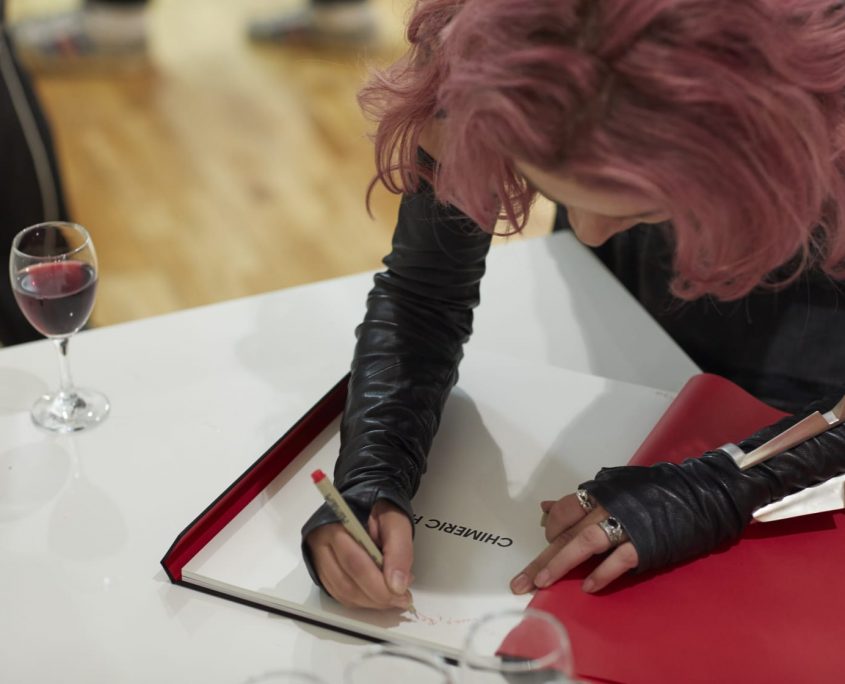
It seems like research would have to play a role in your work, as well. Can you tell me about places you go for research, or courses you have taken that help fuel your work and interests?
Having recently moved to London, one of the first things I did was join the British Library, which is a mind-boggling archive, going back centuries and housing everything from the Codex Sinaiticus to Oscar Wilde’s letters! I took a course on the history of witchcraft in medieval Europe there, too — felt relocation-appropriate, and, with the re-emergence of public pop-witchcraft lately, I’ve become interested in the details. I spend a lot of time at the Wellcome trust, admiring the medical models in the wunderkammer, or curled up in the reading room. Even in research mode, I attend life drawing workshops as much as possible – in addition to keeping me warmed up, they’re essential in helping me work faster and with more confidence. London itself is vastly inspiring and teeming with museums, gardens, Victorian cemeteries, a spine-tingling assortment of architecture, and so much captivating, murky history. Even so, I travel a lot. My current favourite places include the orchid conservatories at the botanical gardens in Edinburgh and Dublin, the gorgeous KSEVT space centre in the tiny Slovenian town of Vitanje, the Antoine Wiertz museum in Brussels, and Iceland’s frozen waterfalls in winter.
You have lived in and traveled to many different places, from growing up in communist Moscow and LA to living in the American south, Chicago, The Bay Area, Ireland, etc.). Have any of these different places influenced your art or your career?
Growing up in the Soviet regime and then watching its very public demise did a lot for the way I interact with reality today: there is nothing I don’t question. This isn’t meant to sound bleak – having no trust in systems is essential for artists. The deep American South I navigated as a runaway teen was limited to the backwater crevices of Louisiana and Texas. It taught me about voodoo, cayenne pepper, and catching ‘gators with bread and duct tape. It also helped me not be too surprised when the US election results were announced in 2016. Ireland is the place where the Alien Botany clothing line first got its feet, where I felt real, old magic in the soil, where we lived when I married my beloved (though our actual wedding took place in Slovenia), where I realised I wanted to move to Europe for good. It was a beautiful backdrop for a period of change and transience, which I will always treasure. There’s also something to be said for escaping some of what shaped us early in life, the very choice and act of escape, the conscious sloughing and discarding of what no longer works shaping us into our whole self. Specifics aside, spending time in seventeen countries so far instilled a hunger for uncovering and creating secrets – that’s the sweeping and most significant influence.
